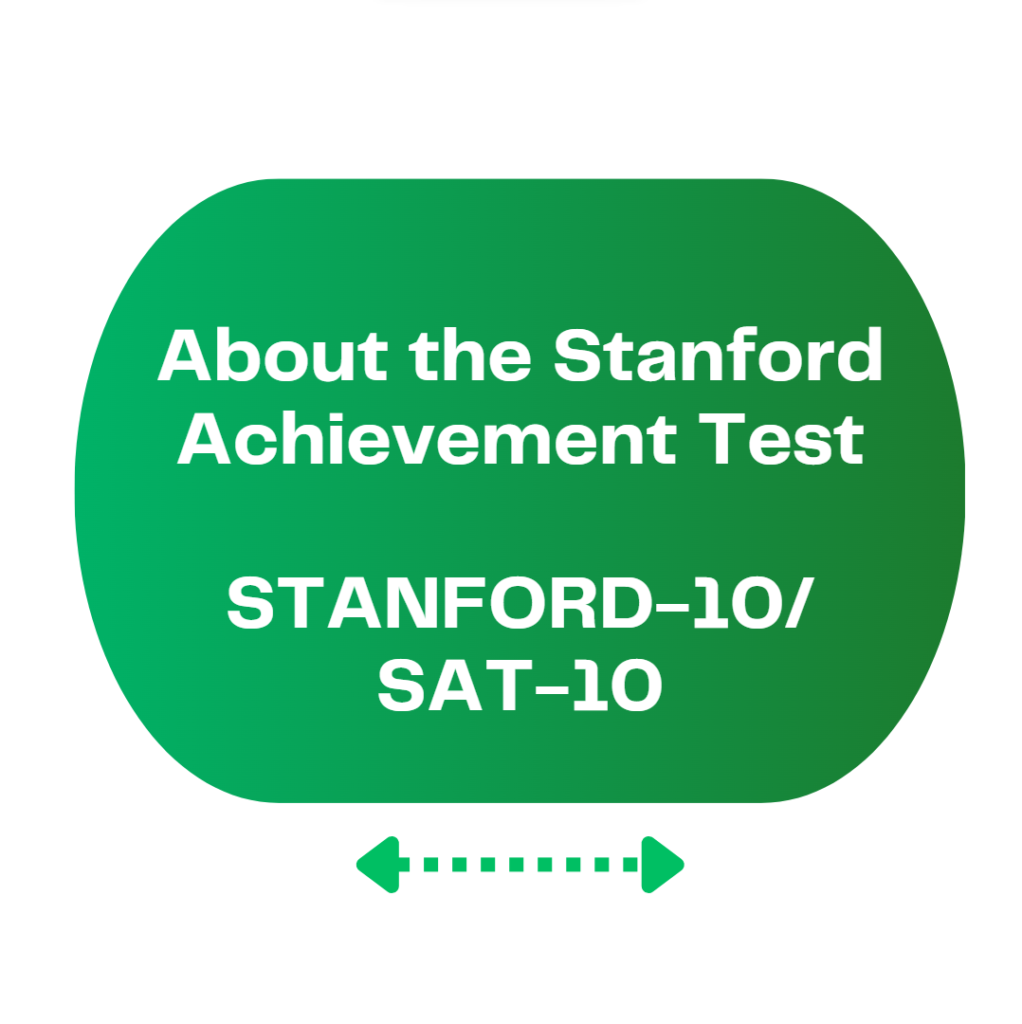What is the Stanford Achievement Test (SAT-10)?
Stanford Early School Achievement Test, also called Stanford-10 or SAT-10, is a set of standardized achievement tests used by independent school districts in the United States to measure the progress of children from kindergarten to high school. This test was first developed in 1922 by Lewis M. Terman, a former professor of Psychology at the Stanford University, and the test has been in constant use for more than 100 years now. Thousands of students have taken this test across these decades. The test is primarily designed to understand the progress in academic knowledge of elementary and secondary school students.
The World Book Company published the first edition of the test in 1922. Over the past century or so, the test has undergone 10 major revisions.
What subjects does the SAT-10 test?
The SAT-10 uses the following subtests – Reading, Mathematics, Language, Spelling, Listening, Science, and Social Science. Like the CogAT, the SAT-10 has various forms (Form A and Form D) and it also uses stanines to report the results. The SAT-10 has been used for more than 100 years by academicians with great confidence to understand the progress of children with respect to the required standards of improvement, nationally and state-wise. The test is especially useful when used in combination with CogAT and OLSAT to measure a child’s academic progress, strengths, and weaknesses. CogAT and OLSAT are not achievement tests in the way like they don’t test the knowledge taught in schools, they test more on reasoning skills of students. CogAT and OLSAT tests are used to identify for the gifted and talented program in schools. CogAT and OLSAT, therefore, only has verbal, non-verbal, and quantitative reasoning in the test whereas the SAT-10 tests the knowledge on Science, Social-Science, Mathematics and more.
Is the SAT-10 test reliable and is it related to the Scholastic Assessment Test (SAT)?
Throughout these years of testing and follow up measurement, the test came out with flying colors on its reliability. The Reading section of the SAT-10 received an alpha reliability rating of .87, the Math section .80-.87, and the language section .78-.84. This is one of the most reliable tests in the world that academicians can use confidently. The test is unique in that it is not a timed test. Because of its similarity in name, the test is often confused with the Scholastic Assessment Test (SAT) conducted by College Board for undergraduate admissions. Not to be confused with the SAT, the SAT-10 test is owned and conducted by Pearson. Check a sample SAT10 test for Grade 4 provided by the Kentucky State Assessment. Refer to the sample test questions by Shaker Heights City School District.
How can my child prepare the best for the SAT-10?
We advise practicing as much as possible to build familiarity, speed, and knowledge. Building familiarity with the test is very important before the D-day. There is no rush on the SAT-10, but it is important that you understand the terms of the test in terms of format, length, and requirements. Some sample questions for different grades are provided in the attached document below.
https://www.shaker.org/downloads/brochuregr2primary2.pdf
Only accredited schools and school districts can purchase the Stanford-10 test. Some state schools maintain longitudinal data of student performance over the time and some states do not maintain it owing to cost-reduction reasons. To learn more about the SAT-10 in detail, refer to this paper from ScienceDirect.
Hope this is useful, thank you.
If you’re looking for specific learning guidance, book a trial class with us to take it forward.

